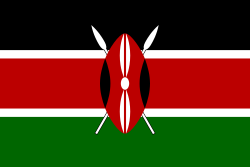Kenya | |||||||||
|---|---|---|---|---|---|---|---|---|---|
| 1963–1964 | |||||||||
| Motto: "Harambee" (Swahili) "Let us all pull together" | |||||||||
| Anthem: Ee Mungu Nguvu Yetu English: "O God of All Creation" | |||||||||
 | |||||||||
| Capital | Nairobi | ||||||||
| Common languages | English Swahili | ||||||||
| Government | Federal parliamentary constitutional monarchy | ||||||||
| Queen | |||||||||
• 1963–1964 | Elizabeth II | ||||||||
| Governor-General | |||||||||
• 1963–1964 | Malcolm MacDonald | ||||||||
| Prime Minister | |||||||||
• 1963–1964 | Jomo Kenyatta | ||||||||
| Legislature | National Assembly | ||||||||
• Upper House | Senate | ||||||||
• Lower House | House of Representatives | ||||||||
| Historical era | Cold War | ||||||||
• Independence | 12 December 1963 | ||||||||
• Republic | 12 December 1964 | ||||||||
| Currency | East African shilling | ||||||||
| |||||||||
The Commonwealth realm [1] of Kenya was a short-lived sovereign state between 12 December 1963 and 12 December 1964 whose head of state was Queen Elizabeth II. It was a predecessor to the Republic of Kenya.

